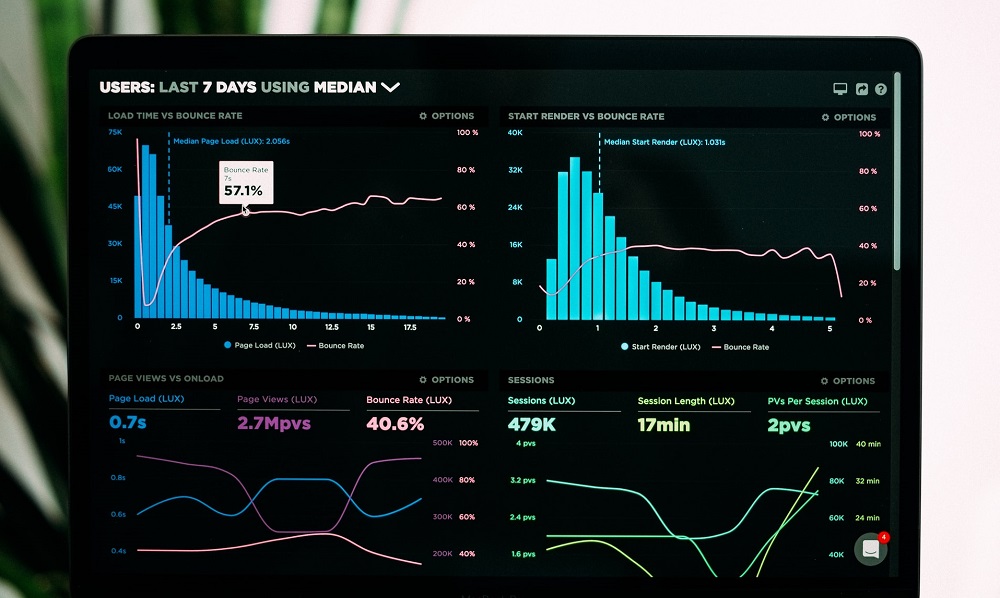Migration and population trends for September 2021 are in. We are starting to see a slow return back to base, meaning residents returning to urban locations. But it is a slow process and by no means complete yet. Here are a few representative graphs that illustrate the point. Resident moves from May to September 2021 show a slight increase of residents in the Northeast (New York to Massachusetts), Southeast, Northwest and (less so) in the Southwest coasts.
On Tuesday September 28, 2021 Thor Industries, Inc. (THO) posted better-than-expected revenues of $3.59bn beating the consensus estimate of $3.3bn (-8%) and in the same direction as Advan's forecasted sales. The revenue was +54.6% YoY - Advan's foot traffic data captured an increase in employee foot traffic of +40% YoY at its manufacturing locations for Q4 fiscal 2021. As a result of beating the sales and EPS, the stock opened at $116.58, up +3.4% from its previous day's closing price and hit a high of $126.99 (+12.5%) shortly after the opening bell.
On Thursday September 23, 2021 Darden Restaurants, Inc. (DRI) posted better-than-expected revenues of $2.31bn beating the consensus estimate of $2.24bn (-3.1%) and in the same direction as Advan's forecasted sales. The revenue was +51.2% YoY - Advan's foot traffic data captured an increase in foot traffic of +56.4% YoY at its restaurants for Q1 2022. As a result of beating the sales and EPS, the stock opened at $159.34, up +6% from its previous day's closing price and set an all-time high of $164.28 during the trading session.
There was a location data report published last month called ‘Malls Rise Once Again’ that caught people’s attention. It claimed that malls have made a ‘full COVID recovery’ and have as many visitors as in 2019. We at Advan live and breathe location data, so our intuitive response was ‘no way, how have we missed this… ’. The reality is, while mall traffic has certainly been improving, it is still down 22% versus 2019. If the visitation estimates for such big, and therefore easier to measure, properties are so off from reality
As people start to feel the threat of the new Delta Variant, Southwest Airlines is experiencing its effect firsthand. The COVID-19 pandemic shut down airports worldwide and Southwest was no exception, seeing an 89.65% decrease in foot traffic as measured by Advan between April 2019 and April 2020. According to The Dallas Morning News, “On April 14, 2020, only 87,534 passengers went through Transportation Security Information checkpoints in U.S. airports, the fewest number of travelers since the 1950s.”
While the world seemingly shut down when the COVID-19 pandemic hit, grocery stores had a steadier path than the rest of the economy. On the other hand, many big box stores like Target, Costco, and Walmart, experienced a bit more volatility with higher highs, but also lower lows. Big box stores saw a 28.4% decrease in foot traffic in April 2020, but then jumped back up 28% the following month. On the other hand, grocery store foot traffic decreased only 18.4% from March to April 2020 and then increased just 3.7% the following month.
On Monday, July 19, 2021, Ice Cream brand Ben & Jerry’s announced that it will cease selling ice cream in West Bank. The announcement was followed by widespread condemnation from the Jewish community worldwide, and a stern warning from Israel’s PM to Unilever, B&J’s parent company, that there would be legal and other consequences. But what about the actual customers? How have they reacted? Looking at the recent foot traffic across all 380 Ben & Jerry’s stores that Advan Research covers, there does not seem to be a material effect on customer visits.
Automakers have been struggling to produce cars due to the global shortage of semiconductor chips first occurred in the early months this year. Fiat/Chrysler, General Motors and Ford and other big names in the industry announced they would reduce the pace of production to tackle this challenge. It did not take long and the impact of the idled factories is now reflected on the sales. Using employee counts are often times the right metric produced by our data to analyze industrial companies.
As theaters have started opening back up to the public, the blockbuster movie season is slowly making its way back into audience’s summer traditions. After a year of closures, many wondered if theaters would be able to recover, especially with the recent popularity of streaming services and home premieres. The latest foot traffic data compiled by Advan Research suggests that the blockbuster movie season is back and is possibly on track to reach the heights of past years.
After being grounded for over a year, Americans have begun traveling again. Now, people all over the country are trading the comforts of home with the experiences of hotels, resorts, and casinos. Our research suggests that both these industries have begun to rebound nicely from the pandemic. As of June 2021, foot traffic in hotels and resorts was up 140% over June 2020. Casinos are up 243% since June 2020. Although both sectors have seen great improvements since the peak of the pandemic, however hotels and resorts remain 30% below June 2019 levels, while casinos are still down 23%.
After months of cramped up home workouts, people across the U.S are now looking to get their fitness routines back on track. Our research data suggests that gyms across the country have been seeing increased customer traffic as a result of the recent easing of Covid restrictions and the long-awaited return to normalcy. As of May 2021, foot traffic in nationwide gym chains was back to 51% on average compared to Jan 2020 and 47% back to May 2019 levels, suggesting that gyms overall are halfway through to reach pre-pandemic levels.
Gas prices and futures (contracts to buy gasoline at some point in the future) have been up massively over the last few months, to the extent that some traders are betting on the return of $100 oil/barrel before the end of the year (Options Traders Bet on Return of $100 Oil ). It was reasonable to expect that with US reopening after the pandemic we would see an increased demand in travel, and gasoline demand as a result.
Using our latest traffic pattern data, some interesting new travel trends emerged over the Memorial Day weekend (MDW) - the unofficial beginning of the summer season for many Americans on the go. We believe this pattern could be a leading indicator for consumer behavior as we move closer to Independence Day in July and the summer vacation period. We examined how many miles Americans drove on the Fridays leading into the MDW - this past Friday, May 28, compared to Friday, May 24, 2019, and Friday, May 29, 2020.
Office properties and office leasing companies like WeWork are watching very closely the speed with which employees return to the office. The question at large remains: is the work from home (WFH) phenomenon here to stay, or will it prove to be only temporary for most? Using Advan’s mobile phone location data, these questions can be answered.
One of the largest moves we have ever seen in our data is that of gas station visitors and miles driven. Americans drive more now than they ever did, pre-pandemic and all. What is the best way to trade this data? According to the analysis below, Gasoline Futures.
The oldest continuously held major sporting event in the United States, the Kentucky Derby had enjoyed steady growth from 2016 to 2019, but in 2020… well, we all know what happened last year. As the world opens up, it’s interesting – not just for Churchill Downs, but to understand the sentiment of all Americans – to see how the attendance at the Derby is shaping up this year.
Following the recent news that Ford is expected to halt production for two weeks in April due to chip shortages, and given our recent study on this exact subject few months back we wanted to take a closer look and quantify how the largest US carmakers and the industry as a whole is currently affected. Employee counts are often times the right metric produced by our foot traffic data to analyze industrial companies. Looking at the employee traffic at the US plants for the three major carmakers it is clear that we are consistently for the last seven or so months at subdued levels of production, with March being the first month showing al recovery.
One year after the initial lockdowns and stay at home orders across the groble, Americans are now driving a lot more, as measured by our miles driven index. More specifically, the last three weeks Advan’s miles driven index captured an increase in traffic as high as 40% nationwide compared to the pre-pandemic levels in February 2020. As the vaccines are being rolled out people’s confidence is picking up and in combination with certain COVID-related restrictions being lifted and the advent of Spring and Spring breaks, everyone seems to be making up for lost travel.
It’s been a year now into full or partial lockdowns, social distancing rules and work from home as a result of the COVID crisis which unequivocally forced people to spend more time into their homes and consequently to change their shopping habits - reconsidering what is essential and therefore set new priorities on what to buy. One of the new essentials seems to be – not surprisingly – bedding products as people seek extra comfort at home. Mattress sales soared in the second half of 2020 since many Americans decided to upgrade their sleeping setup.
On a recent article published by Kate Gibson, Kroger, one of the most prominent grocers in the US, is expected to shut down two California stores to avoid offering workers ‘hazard pay’. Both of these stores are located in the Long Beach area, one is under the Ralph's franchise while the second one under Food 4 Less(both brands are Kroger subsidiaries). When big firms like Kroger decide to close a store, they are taking into consideration many parameters; the first one comes to mind is the profitability of the store itself.


























